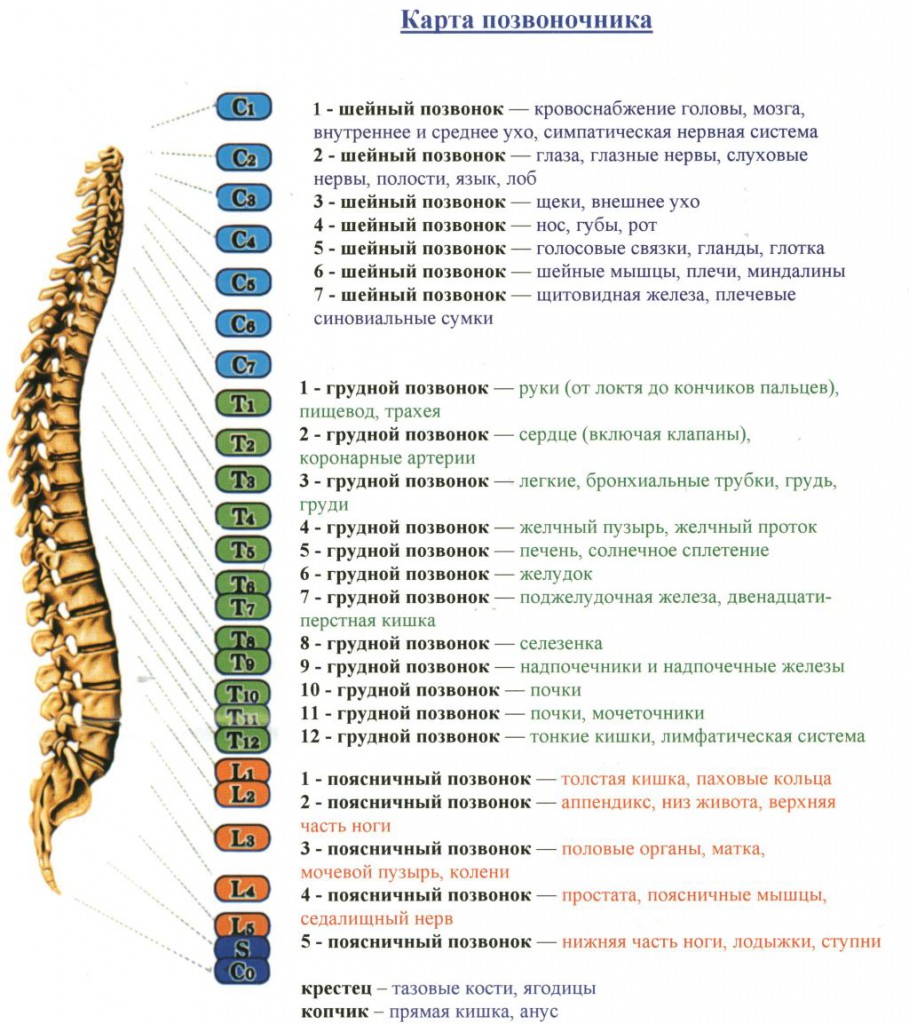How does the human spine and its component parts
The Vertebral column of man performs a number of essential functions. Among them, the retention of the bones, muscles, protecting the spinal cord and internal organs from damage, depreciation, and hematopoiesis. It consists of separate elements, whose number can vary from 32 to 34. They are divided into 5 divisions depending on the anatomy, functions.

Map links the vertebrae with internal organs
structure of the vertebra
Every vertebra, regardless of location, has the body off of it with spikes. Using the upper and lower articular sites they are grouped together. Spinous process facing backwards and with the similar forms a single line that can easily be felt through the skin on the back. In addition, there are two transverse process serving for muscle attachment.
Between the spinous, two transverse processes and the body is formed a circular opening that houses the spinal cord with its membranes. And between the bodies on each side are formed of the intervertebral foramen. Through them to the internal organs leave the spinal nerves. The space between the vertebrae is filled with cartilage that performs a shock absorbing function.

the Structure of the vertebrae and intervertebral discs
spine
Anatomical structure of the human spine consists of 5 departments:
- Neck: consists of seven vertebrae, two of which have characteristic features. The first account is called the Atlantean, it connects with the occipital bone of the skull. Atlas has no body and is represented by two arcs. Second (epistrophy) contains a special tooth, which is worn on Atlanta, GA. Together these two elements form a atlantoosevoy joint, which serves as the axis for rotation of the head. Seventh cervical vertebra is characterized by very pronounced spinous process, it is easy to palpate on the back of the neck.
- Rib: consists of 12 vertebrae, respectively, twelve pairs of edges that depart from them. They are somewhat more powerful than the neck and are distinguished by the presence on the sides of the rib fossae for articulation with ribs.
- Lumbar: the five vertebrae powerful that can withstand the main load of the entire spine
The sacrum is a single triangular shaped bone consisting of five fused together elements. Contains apertures for vessels and nerves that supply the pelvic organs. - Coccyx: the most variable in structure vestigial Department, which may be represented by three or five elements, are also fused into a single unit.

the spine. Side view and rear.
Curves of the spine
With the transition to bipedal locomotion in humans has formed four physiological curvature of the spine: 2 of 2 lordosis and kyphosis. So, in the cervical, lumbar spine when considered in profile has a deflection forwards (lordosis), and in thoracic, sacral – back (kyphosis). Lateral curvature in the frontal plane is called scoliosis, they are considered pathological.

the Physiological curves of the spine: lordosis and kyphosis.





